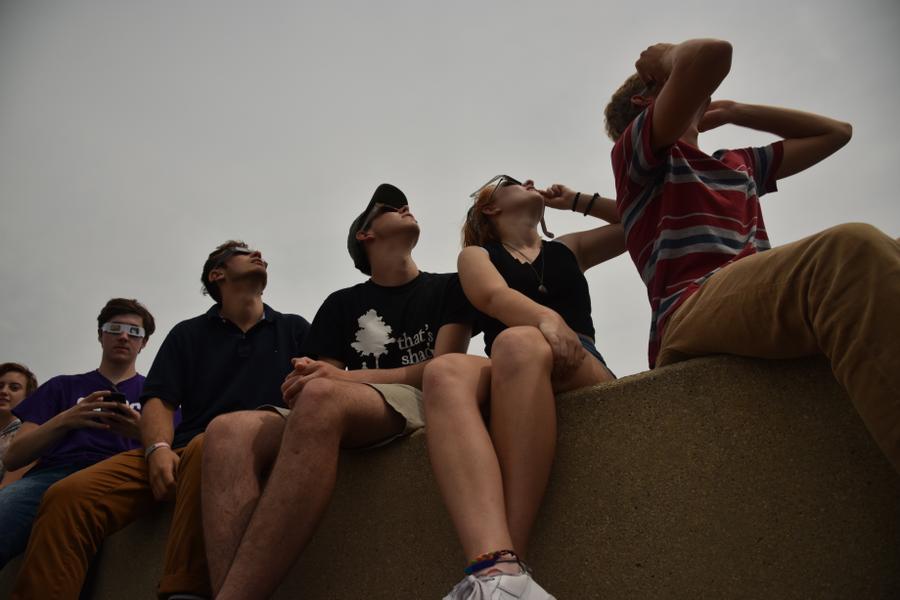It was 11:40 a.m. and my friends and I had just arrived on the roof of the Hitt Street Parking Structure, eclipse glasses in hand. Given that there weren’t any free shirts or pizza being passed out, we figured we’d encounter less people and have more viewing space. Plus, a rooftop with nothing but the afternoon (and soon, night) sky above us was a must for what we were about to witness.
An astronomical anomaly, the apocalypse, a black-hole sun (if you’re a fan of ‘90s grunge), whatever suits your fancy. Stretching from Portland, Oregon, to Charleston, North Carolina, the solar eclipse path fell directly over the city of Columbia, offering Columbians 100 percent clarity of this once-in-a-lifetime event.
Not 86.4 percent. Not 56 percent. Not even 98, but 100 percent visibility of an event that was once believed by ancient Greek philosophers to precede the end times. It literally couldn’t get any better than that.
In honor of MU’s strategic location on the eclipse map, the Missouri Students Association hosted a campus-wide viewing event at the Mel Carnahan Quadrangle, professors cancelled first-day lectures for the afternoon and students congregated at various places outside to experience nighttime at midday.
At 11:45 a.m., we met up with some of our hall mates and had become one of those public congregations. At this point, the moon had officially begun its trek across the sun, morphing the fiery ball of gas into a single-bite cookie in the clouds.
In other words, it was optimal Snapchat story material. If there’s one valuable pro tip I can pass on to the next generation of eclipse gazers, it is to press one lens of the eclipse glasses against the phone camera, scan the other for the sun and bam! You got yourself a quality snap that’ll stand out from the bevy of basic eclipse stories.
12:30 p.m. The lull in the watch party. Though the single-bite cookie had dwindled, we couldn’t help but get pretty antsy. It had, in fact, seemed like the big rock in the sky chose to make no progress for a solid 15 minutes.
Luckily, someone who had driven his car up to the roof used his aux to grace our ears with an out-of-this-world Spotify playlist of eclipse-themed songs. What would an eclipse viewing be without “Total Eclipse of the Heart” and “Dark Side of the Moon?”
It was as if the moon metaphors and overarching cosmic themes had appeased the celestial gods and summoned the moon to pick up the pace. Minute by minute the yellow-orange cookie in the shade of my lens was getting smaller and smaller; the afternoon sky darker and darker.
Then it was completely dark, signalling a chorus of woos and applause from the watchers. The moon had completely engulfed the sun until only a thin ring of sunlight was visible to the naked eye. It was 1:12 p.m. and we had officially entered totality.
Yet, the spectacle in the sky didn’t completely overshadow what was happening back on Earth. With a view of a rainstorm in the distance, a reflection of the sunset over downtown Columbia and a vibrant display of fireworks over campus, we made a point of capturing the full scope in the two minutes allotted to us.
It was an astronomical anomaly, the apocalypse, a black-hole sun, truly a once-in-a-lifetime event for everyone. Honestly, what better way for MU Tigers to kick off the school year than with a total solar eclipse? Perhaps the celestial gods were actually looking down on us, and this is a sign of good fortune for the school year. Who knows?
One thing that is for certain is that the ancient Greeks were definitely wrong. A fiery end to the human race of Biblical proportions would’ve definitely put a damper on our little Hitt Street viewing party.








